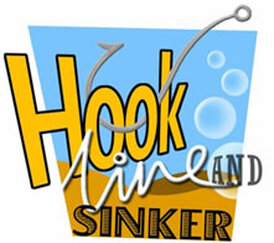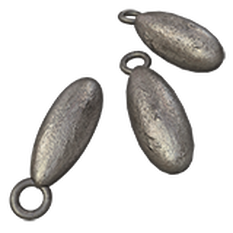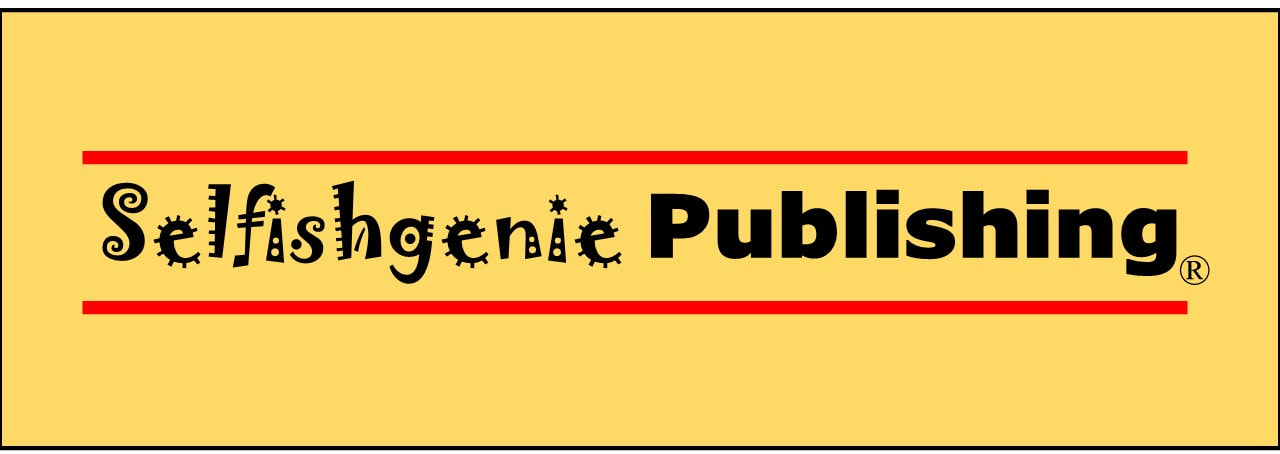Week 10 - I Hear What You’re Saying  It doesn’t matter how many people you engage with on social media, if the messages you send them aren’t clear, they won’t buy your book. So that is the subject of this week’s blog – coming up with clear marketing messages. There are a number of ways to create content and creative people are coming up with new ways all the time. But we’ll start with the basics and you can get creative yourself once you have got the idea. If you’d like to do some training in this topic, our old friends at Future Learn offer an online course that is (yay) free and you can sign up for it anywhere in the world. We recommend it. For this blog we’re going to look at two specific types of content.  You will recall, all the way back in Week 2 of this blog, I mentioned the “elevator pitch”. I said that it wasn’t much good for approaching an agent, but it did have its uses elsewhere. Well, this is “elsewhere”. If you haven’t read that blog and don’t know what an elevator pitch is, it’s a short description of your book, designed to catch the attention of a potential audience in a very short space of time – typically the duration of a ride in an elevator, hence its name. Elevator pitches aren’t unique to the publishing world. They can be used in any interaction where you need to get an idea across quickly and concisely. Imagine you are at a party and you find yourself in conversation with a stranger. “What do you do for a living?” They ask.  “I’m an author.” you reply (because you are if you want to sell your books, no matter what you actually do to earn a living). “Oh, that’s interesting.” They say, because this is a party and they feel obliged to make small talk. “What sort of books do you write?” “Well, my latest book is …” And you launch into your elevator pitch, which is basically your book’s description in thirty to sixty seconds. Then you pause. If their eyes have glazed over and they change the subject, let it drop – don’t bore them to death with it. But if they say “Oh, that sounds intriguing,” They may ask you more and you can feel free to elaborate until they run away screaming.
there are so many available on the internet already. This is one I found quite quickly. If you don’t like that one, there are plenty more where that came from. But that elevator speech is your basic marketing message for use on social media because it is concise and easy to understand. If you can get it down to 280 characters, then it’s ideal for Twitter, but if you can’t then it can still be used on other social media.  Here’s a trick for Twitter. Turn your message into a picture. Use Powerpoint (other graphics packages are available), put your elevator pitch into a text box, insert the cover image alongside it and save it as a .jpg (image) file. All you need to do then is upload it into your Tweet and add a link so that anyone interested can click through to its retail page on whatever platform you are using for sales. But, of course, you can also use the same “slide” for other social media. But you don’t have to stop there. If you can set up a series of slides you can join them together and make them into a video using packages such as “moviemaker”. Or you can make some actual videos with yourself or family members in them. These are ideal for use on Youtube and Instagram (you could actually video yourself in a party situation, in conversation with a “party guest”). I have what is known as a “good face for radio”, which is a euphemism for being ugly, so I wouldn’t want to be in a video, but there’s nothing wrong with my voice, so I can do a voiceover for a video made up of slides  Some music helps and you can find stuff to download for free on this website. You can also find some sound effects there. You may want to edit the soundtrack or music clip, and there is a package called Audacity which can also be downloaded for free. It isn’t easy to use, so be prepared to take some time to learn how. With Audacity you can also create and edit your own podcasts and you can upload them to sites such as Spotify for Podcasters. (other websites for podcasters are available). But if you are going to do a podcast, you are going to need a lot more material than just your elevator pitch.
available on some retail platforms. Your elevator pitch provides the intro, to “hook” the listener and then the extract reels them in. I think you can see that this is all very time consuming, which is why small publishers want 50% of your royalties if you sign with them. If you are a full-time author you may have time to do all this marketing, but if you have a day job and a family to juggle, then it becomes more challenging. But if your books aren’t selling and you aren’t doing some (or all) of this stuff, then that may be one of the reasons. "But if your books aren’t selling .... that may be one of the reasons."  Next, I’m going to take a look at your book’s “blurb”. The blurb is the book’s description that appears beneath the cover image on the retail website and will also appear on the back cover of a hard copy book – or maybe on an inside page. You will find a lot of blogs about writing elevator pitches, but not nearly so many about writing blurbs. That’s because elevator pitches are mainly considered as being a tool to catch an agent’s eye. If you do that, they will find you a publisher and publishers have people who are paid to write blurbs, so the author doesn’t need to know how to do it. But you are here, reading this blog, which means you haven’t got an agent, nor a publisher who employs a blurb writer. So, you need to know how to do this for yourself. Imagine yourself walking along the street and you happen to glance sideways through a window before looking back to where you are going. After a fraction of a second your brain catches up with your feet and says “Hang on, there was something going on in there, but I don’t know what.” Well, that is the elevator pitch. Now you go back and take a proper look through the window and see someone being attacked with an axe. That is the blurb.  Like the elevator pitch, the blurb has to be concise. If it starts to go on too long the reader will lose interest and move onto another book. But it also has to tell the reader that this is a book that they will enjoy reading, which means it can’t be too short. We found this blog that provides some useful tips. They tie in well with an approach using a fishing metaphor: hook, line and sinker (it’s also the titles of the books in a trilogy by Len Deighton, but that’s another story - sorry, pun intended).  The hook is a short, snappy statement designed to catch the eye, just like the hook catches the fish (that would make the elevator pitch the “bait”). This is the sort of thing we mean: “When you’re up to your backside in alligators, it’s hard to remember that the object of the exercise was to drain the swamp.” That sort of sentence excites all sorts of questions, not least, “what does it mean?”. Thinking about your own book, what sort of short, snappy sentence or couple of sentences could you come up with that would catch the eye? Typical romance ones usually focus on unrequited love. Crime thrillers mention the bizarre nature of a murder. The hook for one of our author’s books, Operation Absolom, is “There’s an old saying in the Army, ‘Never volunteer for anything’. It has been said many times, so why on Earth did Steven Carter ignore it?” Straight away you get two things from that: The book has something to do with the Army, and also the main character’s name. But he obviously volunteers for something that he later regrets – but what is it? If you have to find out what he volunteered for, you are "hooked".  The “line” is where you flesh out the plot and characters for the reader. It will be about a paragraph in length, saying enough to keep the interest going, but not so much that you are giving the book away for free. That’s why it needs to be limited a to a paragraph in length – probably no more than 100 words. Returning to Operation Absolom, here’s the “line” we used: “After volunteering for the Army Commandos, Carter finds himself cut off in enemy occupied Norway. It’s winter, it’s cold and the enemy is hunting for him. Can he survive against all these odds? Even if the Nazis don’t capture him, can he find a way back to England?” So, now we know what Carter volunteered for and why he may now be regretting it. We are also setting up the background against which the story is told – Nazi occupied Norway. Finally, we are asking a “cliff-hanger” question – will the hero escape? If the reader wants the answer to that question, they know what they have to do.  People like to read books similar to the ones they have already read and enjoyed. It is a comfort to them – even if it is frustrating for new authors. So, if you can compare your book to well-known books that the reader may have enjoyed, it tells the reader that they might enjoy this one as well. So, the “sinker” is “If you enjoy the stories of (inset well-known author’s name) and (insert another well-known author’s name) then you will love (insert book title) by (insert author’s name). You can jazz that final paragraph up a bit more if you want, by saying things like “tenser than …. more dramatic than …. more tear jerking than ….” etc. But you don’t have to name authors. You can just use a well-known title or even a film or TV series. Our blurb for “The Deputy Prime Minister” compares it to “House of Cards” and “The West Wing”. Amazon, who know a bit about book marketing, suggest a word count of about 150 for a blurb. That’s only a target, of course, but it gives you something to aim for.  The whole idea of the blurb is to encourage the reader to “look inside” ie start reading the book, just as they might if they were standing in a bookshop with the book in their hand. If you succeed you have a better than 50:50 chance of the reader buying the book. Let’s face it, if you have got the reader this far, the only reason for not buying the book is that, based on the ‘look inside’, they don’t like it or they think it is poorly written. Which is the other main reason your book may not be selling. It doesn’t matter how much marketing you do, if the reader doesn’t like that ‘look inside’ bit, they aren’t going to buy your book. But that is for you to reflect on.
you want, but it’s not so easy to refresh your blurb. Basically you have to republish your book, so taking your time to work on your blurb is time well spent. Why not try it out on your beta readers as well? Send them two or three versions and see which one they prefer. They might even be able to suggest improvements.
Like your elevator pitch, your blurb can be used on social media. It is quite well suited for Facebook, for example, with a link to the book’s retail page so the reader can ‘look inside’, or perhaps to a website where they can get a free extract, as discussed in last week’s blog. Your blurb can be turned into a video and used as the introduction to an extract in a podcast. If you know how to do it, you could even produce an animation. The limit is your own imaginations and skills – and how much you are willing to spend on software packages. We would advise keeping things simple (and free) to start with, then perhaps re-investing some of your royalties later, once you have sold some books. Talking about selling, what should be the price of your book? That’s what we take a look at next week. If you have enjoyed this blog and found it informative and you don't want to miss an edition, make sure you sign up for our newsletter. Just click the button below.
0 Comments
Leave a Reply. |
AuthorThis blog is compiled and curated by the Selfishgenie publishing team. Archives
March 2025
|

 RSS Feed
RSS Feed